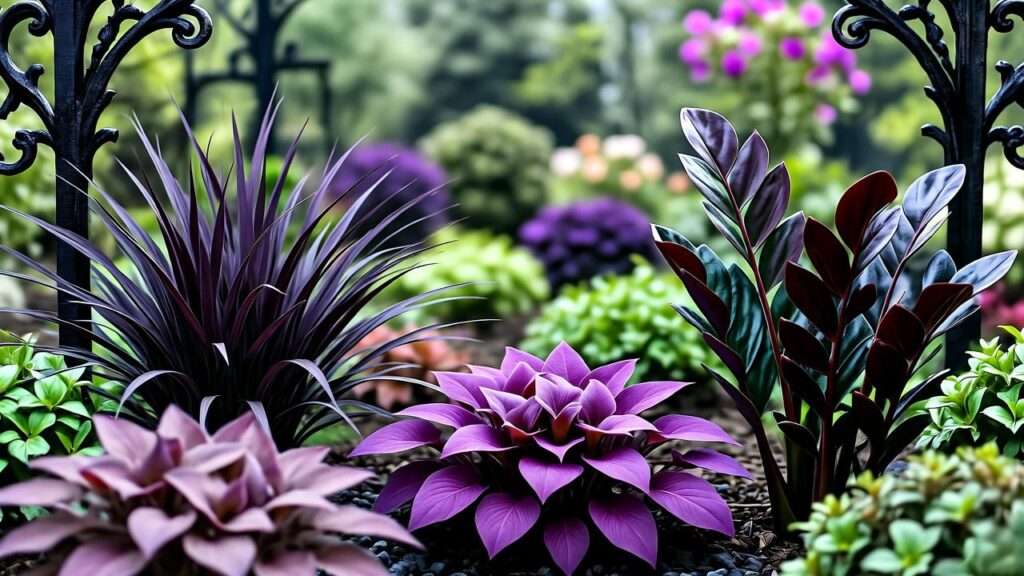Imagine stepping into a garden where shadows dance with deep purples and midnight blacks, creating a scene straight out of a gothic novel. Gothic plants bring this hauntingly beautiful aesthetic to life, transforming your outdoor or indoor space into a dramatic, elegant retreat. These unique plants, with their dark foliage and striking textures, are surging in popularity among gardeners seeking to craft moody, unforgettable landscapes. Whether you’re a seasoned horticulturist or a beginner, this comprehensive guide will equip you with expert insights to grow and care for gothic plants successfully. From selecting the perfect varieties to designing a captivating gothic garden, we’ll cover everything you need to cultivate these enchanting flora 🌑.
As a plant care expert with years of experience in horticulture and landscape design, I’ve curated this guide drawing on botanical research, hands-on gardening, and insights from leading horticultural resources like the Royal Horticultural Society (RHS). Let’s dive into the world of gothic plants and unlock the secrets to creating a garden that’s both mysterious and thriving 🖤.
What Are Gothic Plants? 🌑
Defining Gothic Plants 🖤
Gothic plants are defined by their dark, dramatic foliage, often in shades of deep purple, black, burgundy, or near-black green. These plants stand out for their bold colors and textures, which evoke a sense of mystery and sophistication. Unlike traditional green plants, gothic varieties add depth and contrast, making them ideal for creating focal points in gardens or indoor spaces. Popular examples include Black Mondo Grass, Purple Heart, and Raven Zz Plant, each offering unique visual appeal and adaptability.
The term “gothic” in gardening draws inspiration from the aesthetic of gothic architecture and literature—think moody, romantic, and slightly melancholic. These plants often feature velvety leaves, glossy surfaces, or intricate patterns, enhancing their allure in both modern and traditional garden designs.
The Appeal of Dark Flora in Gardening 🎨
Why are gothic plants capturing the hearts of gardeners? Their striking appearance makes them versatile for various design styles, from minimalist urban gardens to lush, romantic landscapes. They’re also relatively low-maintenance, with many varieties thriving in diverse conditions, from full sun to low light. According to gardening trends reported by the RHS, dark-leaved plants are increasingly sought after for their ability to create contrast and drama without overwhelming care requirements. Whether you’re aiming for a gothic-inspired garden or a bold indoor display, these plants deliver unmatched aesthetic impact.
Choosing the Right Gothic Plants for Your Garden 🌿
Popular Gothic Plant Varieties 🌸
Selecting the right gothic plants starts with understanding their unique characteristics and care needs. Below are some of the most popular varieties, each chosen for their dark beauty and adaptability:
- Black Mondo Grass (Ophiopogon planiscapus ‘Nigrescens’): This low-growing perennial features jet-black, grass-like foliage, perfect for borders or ground cover. It thrives in partial shade and well-draining soil, making it ideal for both outdoor and container gardens.
- Purple Heart (Tradescantia pallida): Known for its vibrant purple leaves, this drought-tolerant plant is a favorite for hanging baskets or ground cover in sunny areas. Its resilience makes it a great choice for beginners.
- Raven Zz Plant (Zamioculcas zamiifolia ‘Raven’): With glossy, near-black leaves, this houseplant is a low-light champion, requiring minimal care. It’s perfect for indoor gothic aesthetics.
- Black Coral Taro (Colocasia esculenta ‘Black Coral’): This tropical beauty boasts large, heart-shaped, dark leaves, ideal for shaded garden beds or as a statement piece in containers.
- Other Notable Varieties: Black Velvet Petunia, with its deep, velvety blooms, and dark-leaved dahlias, which add seasonal drama to flower beds.
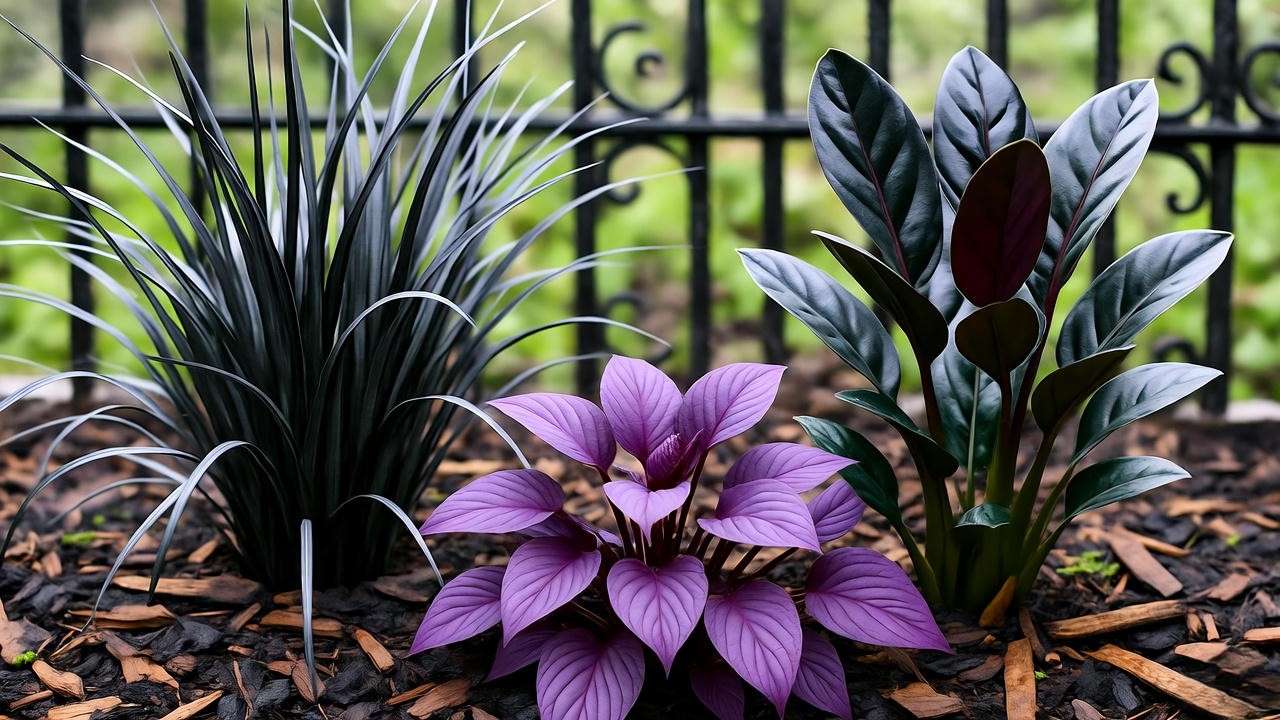
Factors to Consider When Selecting Gothic Plants 🧐
To ensure your gothic plants thrive, consider the following:
- Climate and Hardiness Zones: Check your USDA hardiness zone to select plants suited to your region. For example, Black Mondo Grass is hardy in zones 6–9, while Purple Heart prefers warmer climates (zones 8–11).
- Light Requirements: Some gothic plants, like Purple Heart, need full sun, while others, like Raven Zz, tolerate low light. Match plants to your garden’s light conditions.
- Soil Preferences: Most gothic plants prefer well-draining soil rich in organic matter. Test your soil’s drainage and pH before planting.
- Indoor vs. Outdoor: Decide whether you’re growing indoors or outdoors. Raven Zz and similar houseplants are ideal for indoor gothic displays, while Black Mondo Grass shines in outdoor settings.
Expert Tip 💡
| Plant Name | Light Needs | Water Needs | Soil Type | Best For |
|---|---|---|---|---|
| Black Mondo Grass | Partial shade | Moderate | Well-draining, loamy | Borders, containers |
| Purple Heart | Full sun | Low | Well-draining, sandy | Ground cover, baskets |
| Raven Zz Plant | Low to bright indirect | Low | Well-draining, potting mix | Indoor displays |
| Black Coral Taro | Partial to full shade | High | Rich, moist soil | Shaded beds |
This table simplifies plant selection by summarizing key care requirements, ensuring you choose gothic plants that match your garden’s conditions.
How to Grow Gothic Plants Successfully 🌱
Soil Preparation and Planting 🕸️
Healthy gothic plants start with proper soil preparation. Most prefer well-draining, loamy soil enriched with organic matter like compost or aged manure. Test your soil’s pH—most gothic plants thrive in slightly acidic to neutral soil (pH 6.0–7.0). For planting:
- Prepare the Soil: Loosen soil to a depth of 12–18 inches and mix in compost to improve drainage and nutrient content.
- Planting Depth and Spacing: Follow plant-specific guidelines. For example, Black Mondo Grass should be planted 6–12 inches apart to allow for spreading.
- Water Thoroughly: Water immediately after planting to settle the soil and encourage root establishment.
For container gardening, use pots with drainage holes and a high-quality potting mix designed for the specific plant type.
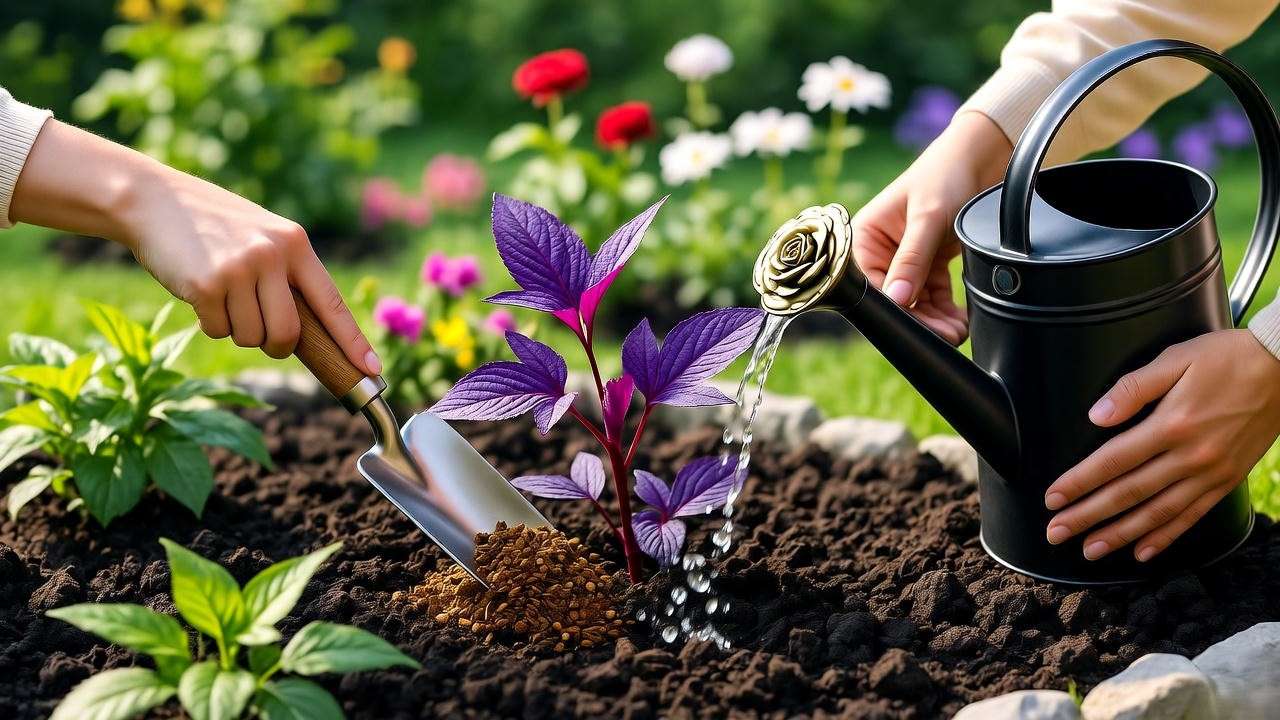
Watering and Feeding 💧
Watering needs vary by plant. Purple Heart is drought-tolerant and requires infrequent watering, while Black Coral Taro prefers consistently moist soil. A general rule is to water when the top inch of soil feels dry, avoiding overwatering to prevent root rot.
Feed gothic plants with a balanced, slow-release fertilizer (e.g., 10-10-10 NPK) every 4–6 weeks during the growing season. For organic options, use compost tea or fish emulsion to boost foliage color and growth. Avoid over-fertilizing, as it can cause leaf burn or faded colors.
Light and Temperature Requirements ☀️🌡️
Light is critical for maintaining the vibrant hues of gothic plants. Purple Heart thrives in full sun, producing deeper colors with more exposure, while Raven Zz tolerates low light, making it ideal for indoor settings. Black Coral Taro prefers partial to full shade to prevent leaf scorching.
Temperature-wise, most gothic plants prefer moderate conditions (60–80°F). Protect outdoor plants from frost by mulching or moving containers indoors during winter. For indoor plants, keep them away from cold drafts or overly hot radiators.
Caring for Gothic Plants: Maintenance Tips 🪴
Pruning and Grooming ✂️
Regular pruning keeps gothic plants looking their best. Remove dead or yellowing leaves to maintain their dark, dramatic appearance. For plants like Black Mondo Grass, trim back any brown tips in early spring to encourage fresh growth. Use clean, sharp shears to avoid spreading disease.
Pest and Disease Management 🐞
Gothic plants are generally hardy but can attract pests like aphids or spider mites, especially indoors. Inspect plants regularly and treat infestations with neem oil or insecticidal soap for an organic approach. For fungal issues like powdery mildew, ensure good air circulation and avoid overhead watering.
Seasonal Care Guide 🍂
- Winter: Mulch outdoor gothic plants to protect roots from freezing. Move container plants indoors in colder climates.
- Summer: Monitor for heat stress in sun-loving plants like Purple Heart. Provide shade during extreme heat waves.
- Indoor Care: Maintain consistent humidity for tropical varieties like Black Coral Taro, using a pebble tray or humidifier.
Designing a Gothic Garden: Aesthetic and Practical Tips 🏰
Creating a Moody Garden Aesthetic 🌌
Gothic plants shine brightest when integrated into a thoughtfully designed garden. To evoke that signature moody atmosphere, pair them with elements like wrought-iron fences, stone statues, or gravel pathways that mimic cobblestone streets. For color harmony, combine deep purples and blacks with silvery accents—such as dusty miller—or pops of white from moonflowers blooming at night. This contrast heightens the dramatic effect, making your garden a captivating evening retreat.
Consider layering plants for depth: tall Black Coral Taro as a backdrop, mid-height Purple Heart for texture, and low-growing Black Mondo Grass as edging. Lighting plays a key role too—string fairy lights or install solar lanterns to illuminate foliage after dusk, enhancing the gothic vibe without overpowering the natural darkness.
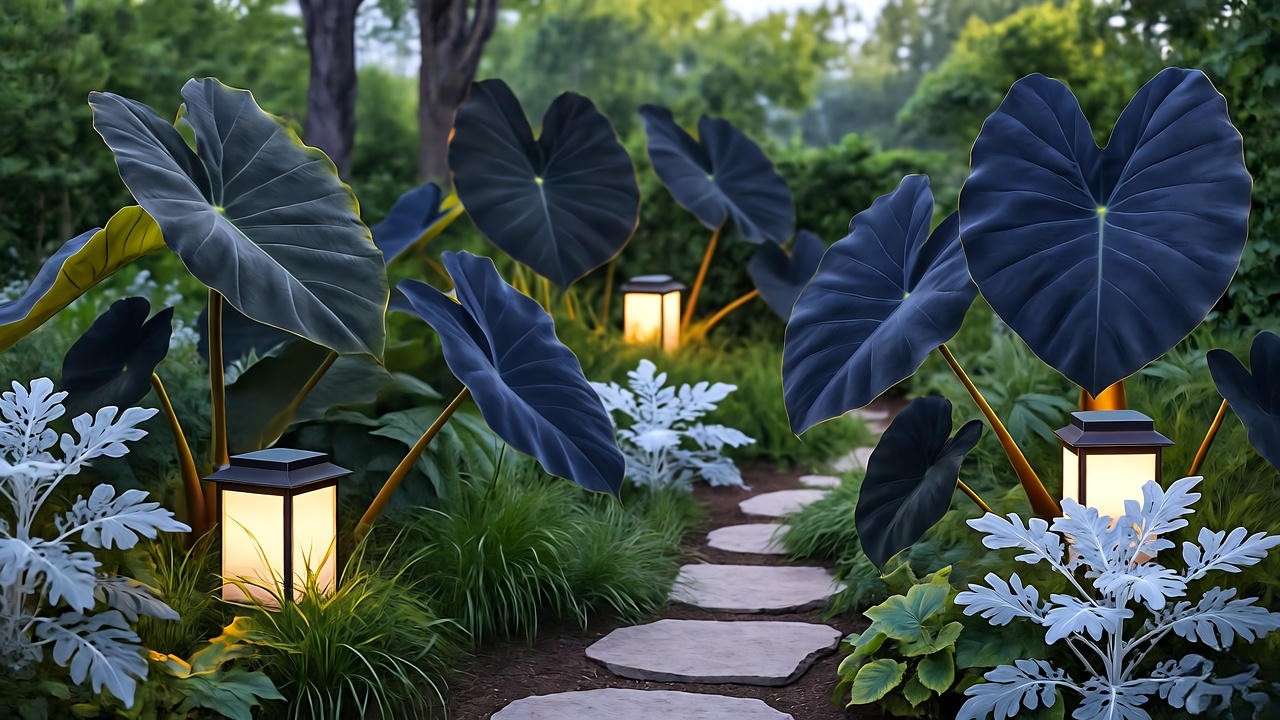
Companion Planting for Gothic Gardens 🌾
Companion planting not only boosts aesthetics but also supports plant health. Pair gothic plants with natives that share similar needs to create a resilient ecosystem. For instance, Black Mondo Grass complements ferns or hostas in shaded areas, while Purple Heart pairs well with succulents like sedum for sunny xeriscapes. Avoid bright, flowering companions like marigolds that might clash; instead, opt for subtle bloomers like black hollyhocks.
This approach minimizes competition for resources and deters pests naturally—gothic plants’ dense foliage can shade out weeds, reducing maintenance.
Expert Insight 👩🌾
As landscape designer Elena Voss notes, “Gothic plants transform ordinary spaces into storytelling landscapes. Their dark tones create emotional depth, inviting reflection much like a gothic tale.” Drawing from her work with urban gothic gardens, Voss recommends starting small with containers to test combinations before scaling up.
Troubleshooting Common Issues with Gothic Plants 🛠️
Yellowing or Fading Foliage 😞
One of the most frustrating issues for gothic plant enthusiasts is when those signature dark leaves turn yellow or green. This often stems from insufficient light, where plants like Purple Heart revert to lighter shades, or overwatering leading to nutrient lockout. Nutrient deficiencies, particularly iron or magnesium, can also cause chlorosis.
Solutions: Gradually increase light exposure for sun-lovers, ensuring no sudden burns. Flush soil with distilled water to remove salt buildup, then apply a chelated iron supplement. Monitor pH—aim for 6.0–6.5—and amend with lime if too acidic. With consistent adjustments, foliage should regain its hue within weeks.
Stunted Growth or Wilting 🥀
Stunted growth signals root issues, such as rot from poor drainage or compaction. Wilting, even in moist soil, points to underwatering stress or pests like root mealybugs. In colder zones, frost damage can halt progress.
Step-by-Step Fixes:
- Gently unpot and inspect roots—trim black, mushy ones and repot in fresh, sterile soil.
- Quarantine and treat for pests using a systemic insecticide if needed.
- Provide temporary shade and consistent moisture during recovery, fertilizing lightly once new growth appears.
Patience is key; many gothic plants rebound resiliently with proper intervention.
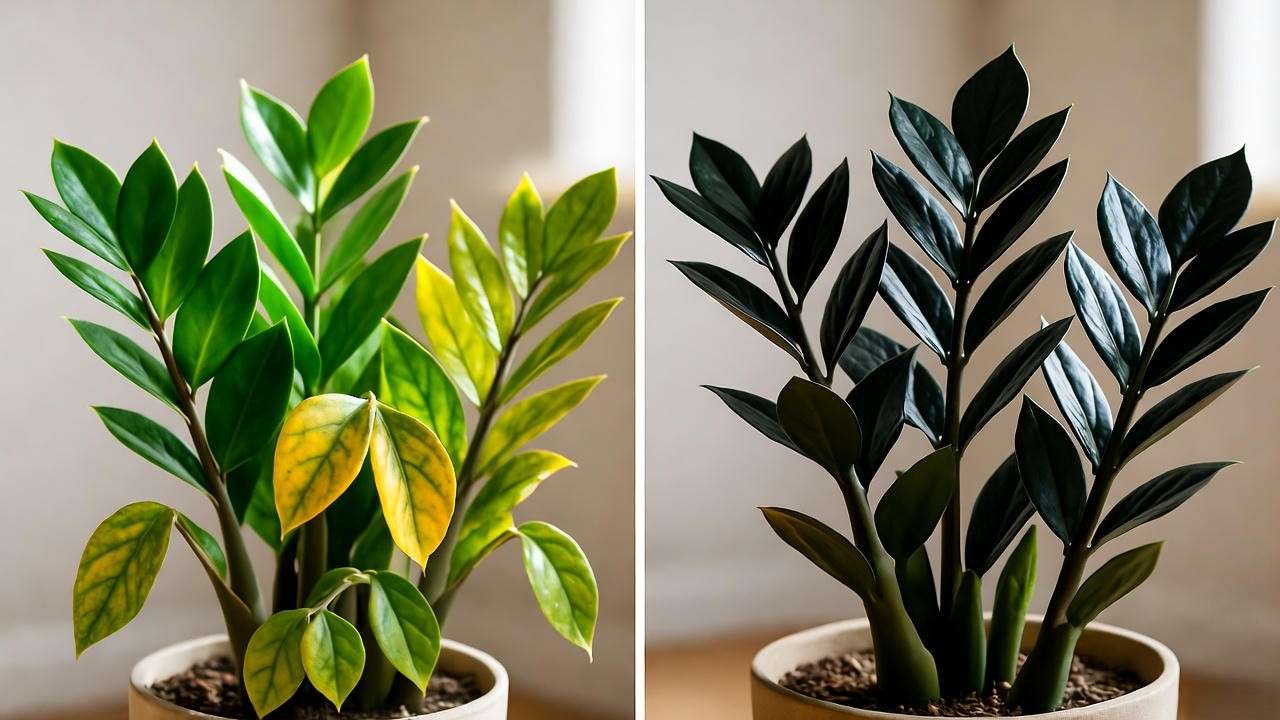
FAQ Section ❓
Why are my gothic plants losing their dark color? Fading often results from inadequate light or high temperatures. Ensure full sun for varieties like Purple Heart and protect from scorching midday rays. Fertilize with a high-nitrogen formula to enhance pigmentation.
Can gothic plants thrive indoors? Yes! Raven Zz Plant and similar low-light tolerant species excel indoors. Place near east-facing windows for indirect light, and maintain 40–50% humidity to mimic their natural habitat.
How often should I fertilize my gothic plants? Every 4–6 weeks during spring and summer with a balanced fertilizer. Reduce in fall/winter to avoid salt buildup. Organic options like worm castings provide slow-release nutrients without risk.
Are gothic plants pet-safe? Most are non-toxic, but Black Coral Taro contains calcium oxalate crystals, irritating to pets if ingested. Keep out of reach or choose pet-friendly alternatives like Black Mondo Grass.
Sustainable and Eco-Friendly Gothic Gardening 🌍
Eco-Conscious Practices ♻️
Growing gothic plants sustainably means prioritizing the planet alongside beauty. Opt for organic fertilizers like bone meal or seaweed extract to nourish soil without chemicals. Mulch with leaf litter or bark to retain moisture, reducing watering needs by up to 30%. Collect rainwater for irrigation, as many gothic plants prefer soft water over chlorinated tap sources.
Source plants from local nurseries to minimize carbon footprints—avoid imported exotics that strain ecosystems. For propagation, take cuttings from healthy plants rather than buying new ones, promoting self-sufficiency.
Supporting Local Ecosystems 🦋
Gothic plants can enhance biodiversity when chosen wisely. Dark-leaved varieties like Purple Heart attract pollinators with subtle nectar-rich flowers, supporting bees and butterflies. Integrate native companions, such as black-eyed Susans in compatible zones, to foster habitat. This creates a balanced garden that not only looks eerie but also aids local wildlife, contributing to urban green corridors.
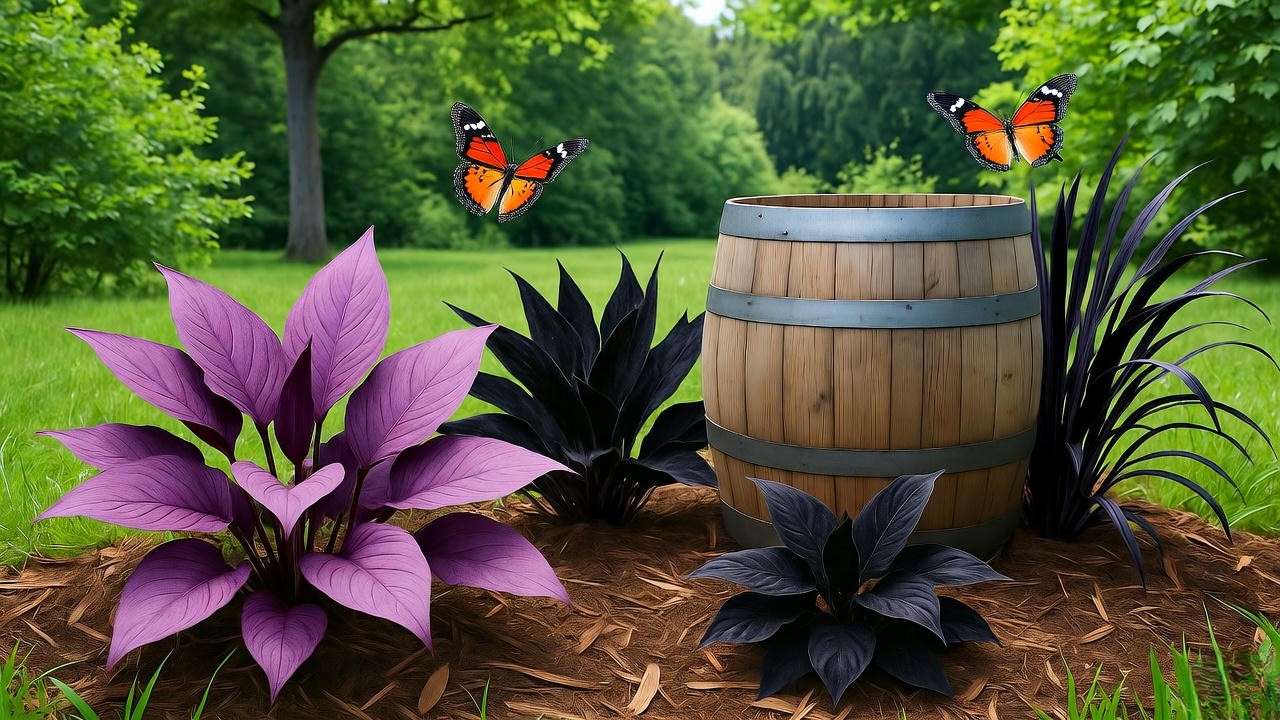
Conclusion: Embrace the Dark Beauty of Gothic Plants 🌚
Gothic plants offer a unique blend of aesthetic drama, low-maintenance care, and versatility, making them a game-changer for gardeners craving something beyond the ordinary. From the inky blades of Black Mondo Grass to the raven sheen of Zz Plants, these flora solve the need for bold, mood-setting greenery that thrives in diverse settings. By following this guide’s expert tips on selection, growth, and design, you’ll cultivate a garden that’s as resilient as it is enchanting.
Ready to infuse your space with gothic allure? Start with one or two varieties, experiment with companions, and watch your landscape evolve. Share your gothic garden transformations in the comments below or on social media—we’d love to see your dark masterpieces! For more plant care wisdom, explore our guides on low-light houseplants or sustainable gardening practices 🌿.

